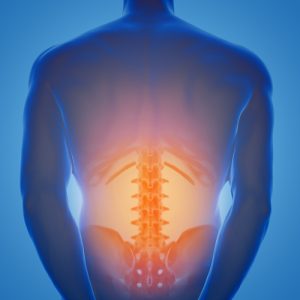 The Center for Spine and Orthopedics offers comprehensive physical medicine & rehabilitation for managing chronic pain.
The Center for Spine and Orthopedics offers comprehensive physical medicine & rehabilitation for managing chronic pain.
Our physiatrists offer a variety of diagnostic and non-operative pain management options, including ultrasound-guided injections, generative medicine, nerve block and acupuncture. These may be prescribed in combination or alone. Our physicians also work in partnership with local physical therapists and other professionals to offer comprehensive pain management treatment.
Diagnosing & Managing Chronic Pain: Injections, Electrodiagnosis & Radiofrequency Ablation
 Spinal Injections
Spinal Injections
While spinal injections can be used to diagnose the source of back, leg, neck or arm pain, they are most often performed as part of a comprehensive treatment program, which usually includes an exercise program to improve or maintain spinal mobility and stability. Spinal injections are performed under x-ray guidance (fluoroscopy) to confirm correct medication placement and improve safety.
Electrodiagnostic Testing
The nerves and muscles in your body create electrical signals that deliver messages to and from your brain. Sensory nerves deliver information about your surroundings to the brain. Motor nerves deliver signals from the brain to activate your muscles.
Injuries or diseases that affect nerves and muscles can slow or halt the movement of these electrical signals. If you have pain, weakness or numbness in your back, neck or hands, measuring the speed and degree of electrical activity in your muscles and nerves can help your doctor make a proper diagnosis. This process is called electrodiagnostic testing.
What test are the most commonly used?
 Electromyography (EMG) – An EMG records and analyzes the electrical activity in your muscles. It is used to learn more about the functioning of nerves in the arms and legs. When a normal muscle is at rest, it is electrically silent. During an EMG, small, thin needles are placed in the muscle to record the electrical activity. Your doctor will listen and watch a TV-like screen that broadcasts the electrical signals.
Electromyography (EMG) – An EMG records and analyzes the electrical activity in your muscles. It is used to learn more about the functioning of nerves in the arms and legs. When a normal muscle is at rest, it is electrically silent. During an EMG, small, thin needles are placed in the muscle to record the electrical activity. Your doctor will listen and watch a TV-like screen that broadcasts the electrical signals.
Nerve conduction studies (NCS) are used to find damage to the peripheral nervous system, which includes all the nerves that lead away from the brain and spinal cord and the smaller nerves that branch out from those nerves. This test is often used to help find nerve problems such as carpal tunnel syndrome or Guillain-Barré syndrome.
Radiofrequency: A Minimally Invasive Procedure
 Radiofrequency ablation is a minimally invasive procedure that can provide lasting relief to those suffering from facet joint pain, a well-recognized source of persistent back pain. It is usually performed with a local anesthetic and mild sedation.
Radiofrequency ablation is a minimally invasive procedure that can provide lasting relief to those suffering from facet joint pain, a well-recognized source of persistent back pain. It is usually performed with a local anesthetic and mild sedation.
As with many spinal injections, radio frequency ablation is best performed under fluoroscopy (live x-ray), which our physiatrist uses to guide him in properly targeting and placing the needle. During the procedure, our physiatrist numbs the targeted nerves to minimize pain uses radiofrequency waves to heat the tip of the needle, which he then uses to create a lesion that disrupts the nerve’s ability to send pain signals.







